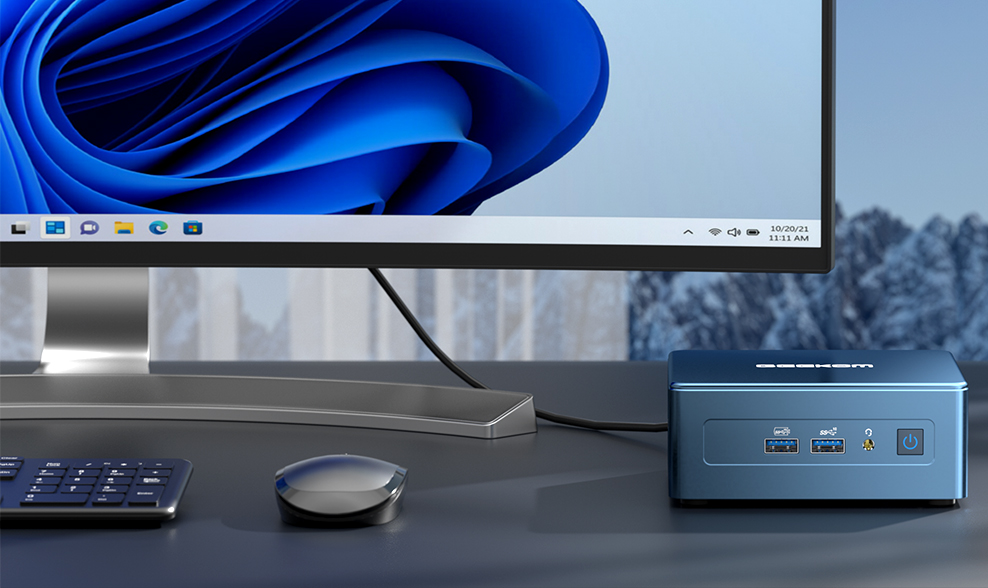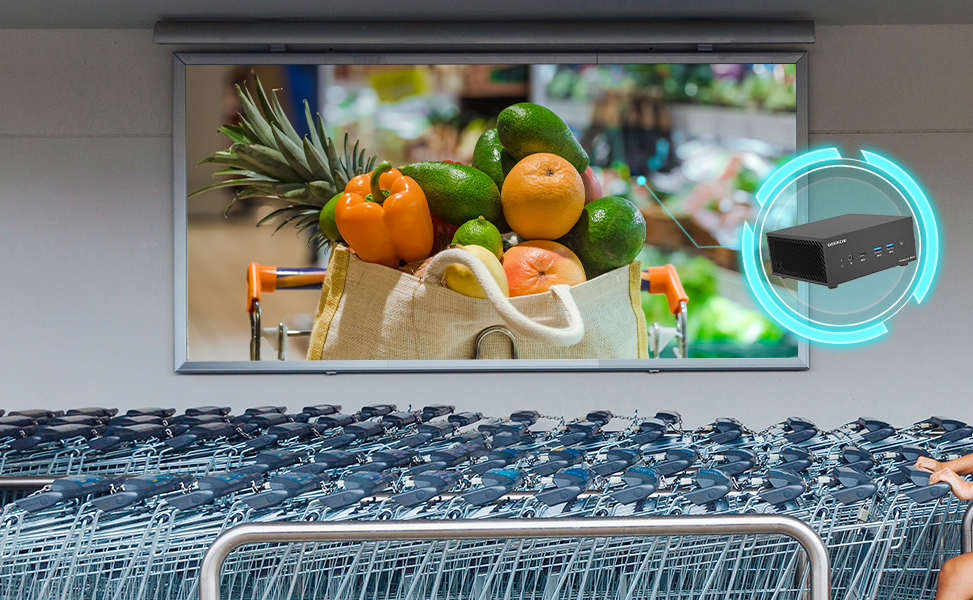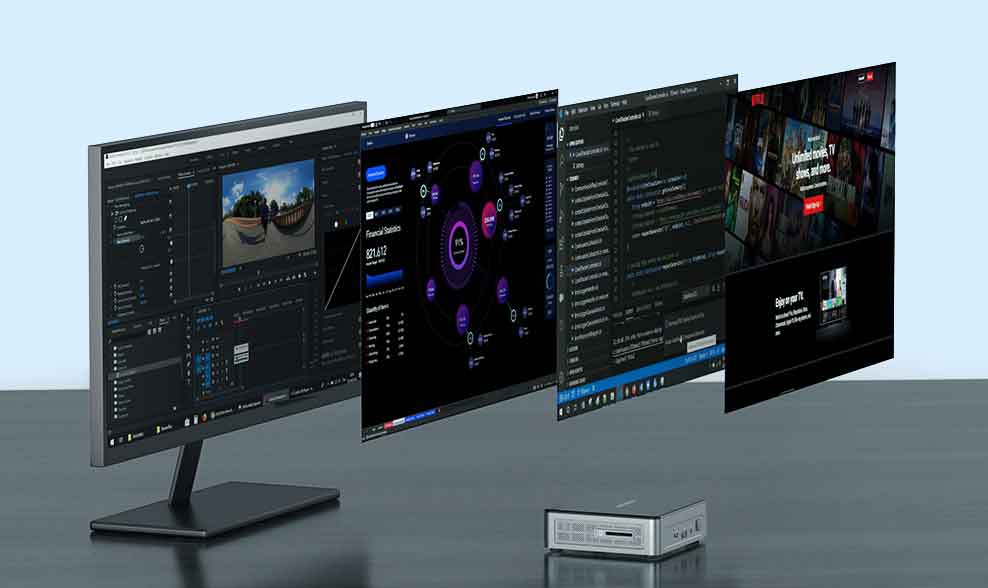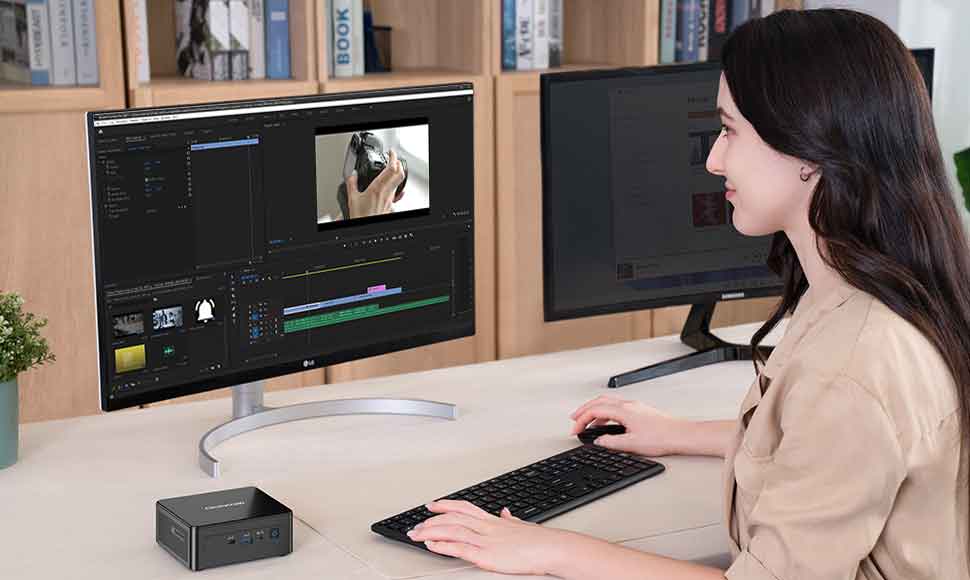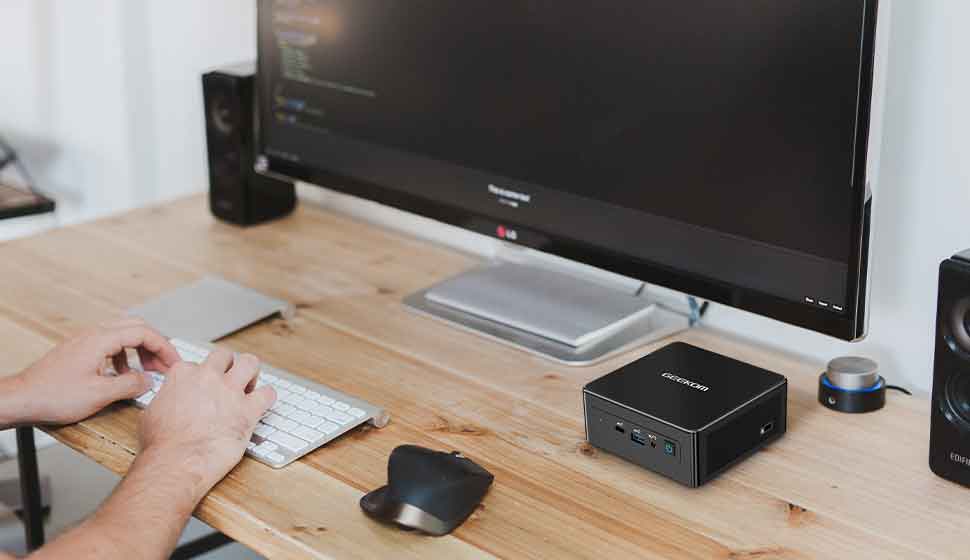When it comes to image editing, a reliable and efficient workstation is essential for photographers and graphic designers.
While traditional desktop computers have long been the first choice when it comes to power and performance, the advent of mini PCs has opened up new possibilities.
These compact devices offer a perfect blend of portability, power and versatility, making them a compelling option for on-the-go editing tasks.
Advantages of Mini PC for image editing
Mini PCs offer a variety of advantages when editing images.
Compact form factor
The main advantage of a Mini PC is its small size. These tiny powerhouses have a compact form factor that takes up minimal desk space, making them ideal for photographers who value portability or have limited space to work.
Their small size also makes them easy to integrate into existing setups or studio environments without cluttering up the space.
Portability
One of the main advantages of mini PCs is their portability. Thanks to their compact form factor, they are highly portable and allow users to work conveniently from different locations.
Photographers and designers can take their mini PC with them on photo shoots or to work with clients, giving them uninterrupted access to their editing workflow.
Performance
Despite their small size, modern mini PCs offer impressive performance features. Equipped with powerful processors and plenty of RAM, they can seamlessly handle resource-intensive image editing tasks.
This allows photographers and designers to work with large image files, perform complex edits, and run sophisticated editing software without experiencing significant slowdowns.
Aesthetics and flexibility
Mini PCs often feature a sleek and modern design that adds a touch of elegance to any workspace. They can be easily integrated into existing installations and offer flexibility in placement and arrangement.
Their smaller footprint ensures a clutter-free workspace and promotes a visually appealing and organized environment for professional image editing.
Cost-effective solution
Compared to high-end desktop workstations, Mini PCs for image editing often offer a more cost-effective solution without compromising on performance.
They offer a balance of affordability and performance, making them an attractive option for photographers, especially those early in their careers or on a budget.
Considerations when choosing a Mini PC for image editing
Although mini PCs offer a number of advantages, there are certain factors you should consider before making your purchase decision. Here are some considerations to keep in mind:
1. Processing performance
One of the most important aspects of a Mini PC for image editing is its computing power.
Look for models with high-performance processors like Intel Core i7 or AMD Ryzen 7 to smoothly handle resource-intensive tasks like rendering, applying complex filters, and running editing software.
Multiple cores and high clock speeds contribute to faster processing and multitasking capability, enabling efficient editing workflows.
2. Graphics capabilities
Powerful graphics processing units (GPUs) are essential for image editing, especially when working with high-resolution images or applying advanced visual effects.
Look for Mini PC with powerful graphics processors or even dedicated graphics cards as these enable accelerated rendering and improve the overall editing experience.
This ensures smooth real-time previews and faster export times, increasing productivity.
3. RAM and storage
Sufficient RAM and storage space are essential for smooth image editing. Aim for at least 16GB or more of RAM to handle memory-intensive tasks and enable smooth multitasking and faster application load times.
Also look for a Mini PC with plenty of storage space, either in the form of a large capacity solid state drive (SSD) or a combination of SSD and traditional hard drive (HDD).
SSDs offer faster read and write speeds, which contribute to snappy performance and fast file transfers.
4. Display connectivity
A precise and high-quality display is essential for image editing. Make sure the Mini PC you choose has the required screen connectivity options, e.g. B. HDMI or DisplayPort to support your desired monitor setting.
Also, make sure the Mini PC supports a high resolution and refresh rate that matches your screen's capabilities.
5. Expandability and upgradeability
Although mini PCs are compact, it is beneficial to choose a model that offers a certain level of expansion and upgrade options.
This allows you to adapt your facility to changing requirements and future-proof your investment.
Look for Mini PCs with PCIe slots, RAM expansion slots, or easily accessible storage bays that allow for hardware upgrades or additions.
Popular mini PC for image editing
When it comes to choosing a Mini PC for image editing, several models have become popular among professionals and enthusiasts.
GEEKOM Mini IT12
The Mini IT12 is an excellent choice for photo editing lovers. Powered by Intel's 12th Generation Core i7 processor, this mini PC offers exceptional performance for resource-intensive tasks. It features an Intel Iris Xe graphics card that ensures smooth rendering and handling complex image editing software.
With support for up to 64GB of DDR4 RAM, the Mini IT12 offers enough memory for multitasking and handling large-scale image editing projects. It also offers extensive connectivity options including USB 4, USB 3.2, HDMI and Ethernet ports.
The small form factor and slim design make it a space-saving solution for photographers and graphic designers looking for a compact editing system.
Apple Mac Mini (M1 chip)
Apple's Mac Mini has long been known for its compact size and high performance. The latest version, equipped with Apple's M1 chip, takes it to a new level. The M1 chip combines an 8-core CPU, an 8-core graphics processor and a 16-core neural engine, delivering remarkable computing power specifically optimized for Apple's macOS and editing software such as Adobe Photoshop.
The Mac Mini M1 is equipped with up to 16GB of memory, ensuring smooth performance even on complex image editing projects. Its impressive thermal design keeps the system cool and quiet, while the Thunderbolt/USB 4 ports offer extensive connectivity options. With its sleek design and the renowned Apple ecosystem, the Mac Mini M1 is the first choice for image editing lovers.
GEEKOM AS 6
The AS6 is a versatile mini PC that offers a lot of performance in a small housing. It offers various configuration options so that users can choose the specifications that best suit their image editing needs. Equipped with an AMD Ryzen 9 processor, AMD Radeon Graphics and up to 32 GB DDR5 RAM, the AS 6 offers impressive performance.
Despite its compact size, the AS 6 has multiple ports including Thunderbolt 4, USB 3.2, DisplayPort and HDMI, ensuring seamless connection with various devices and peripherals. The efficient cooling system keeps the system running smoothly, while the compact design makes it ideal for users with limited desk space.
Conclusion
In summary, the rise of Mini PCs represents a powerful and portable solution for image editing that strikes a balance between performance and convenience. As technology continues to develop, Mini PCs are expected to become even more powerful and provide an excellent platform for visual artists to realize their creative visions.
If you're looking for a mini PC that offers exceptional performance for your image editing, we recommend the offerings from GEEKOM. GEEKOM is known for its high quality and reliable Mini PCs and offers a range of options to suit different budgets and performance requirements.

